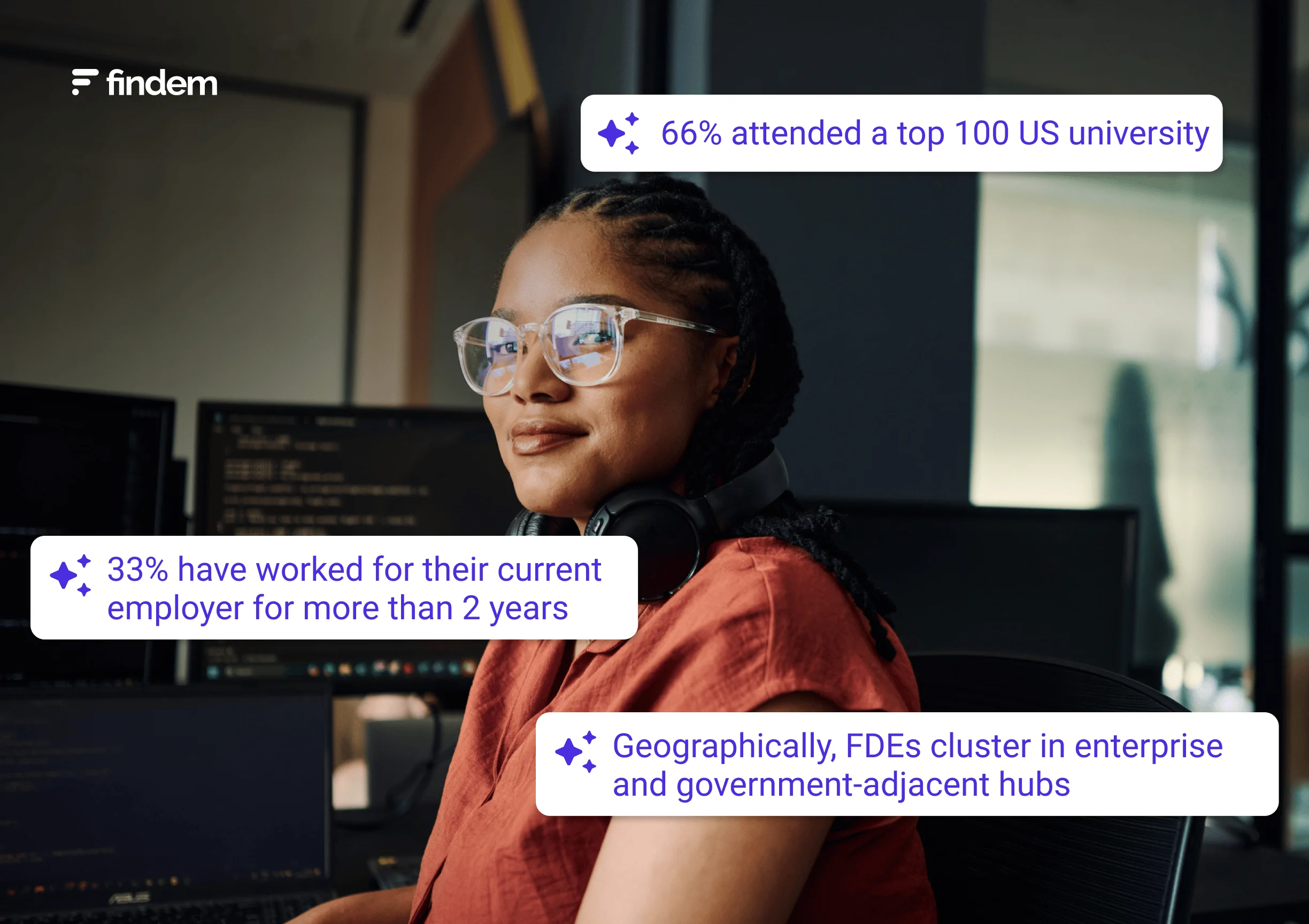.svg)
The resume is dead: 3 ways to use AI recruiting beyond ChatGPT
.svg)
.jpg)
Why the resume is dead for recruiters
Has AI (and more specifically, ChatGPT) killed the resume once and for all? Think about it. With AI , a recruiter can get a head start on a top-notch job description and someone interested in the job can tailor a resume or a LinkedIn profile to match. ChatGPT and AI assistants amplify the age-old recruiting problem of building keyword searches then reviewing the match list one-by-one in the hope of finding the right talent.
Not only is the process time consuming and prone to bias, it rewards people who game their resumes to fit job descriptions and punishes those with the right talent, but the wrong keywords. ChatGPT simply replicates the broken keyword search process at scale, creating more noise for recruiters without solving the problem at large.
A single page can’t possibly tell the full story of someone’s competencies and experiences. People are so much more than a LinkedIn profile or a resume. Learn how to find people by their whole digital picture with Findem's 3D data and attribute search.
Search beyond ChatGPT for what’s not there
ChatGPT may help you write better job descriptions, but it won’t uncover the perfect match for your open requisition.
Instead of using AI to scale what you already do, consider how AI recruiting can do what just isn’t humanly possible. That gives recruiters more time to do what AI can’t possibly do — make a human connection with candidates to learn about their career goals and aspirations. That’s how you hire the right people at the right time, fit for your organization.
Here are 3 ways to use AI recruiting beyond ChatGPT to find talent beyond the resume.
1. Search at scale beyond the resume or profile
When recruiters use a keyword search to source new hires, they’re looking at old data. Most people only update when they're looking for a new job, while some people just aren’t that good at describing themselves. If you tap into your ATS or look for internal talent, most likely the resumes are at least 6 months old.
From an inbound perspective, most resumes submitted by candidates don’t match the job description. In fact, only 8% of resumes are filled out using the right set of searchable keywords; even the best search technology will miss top talent when candidates and employers are out of sync.
That’s where AI recruiting software comes into the recruiting process. AI allows you to look beyond simple matching to triangulate data from many sources and infer meaning. There are over 100,000 sources of public and private data that could be used to uncover attributes of a potential hire and give talent teams a more complete picture of each candidate.
There’s so much more to know and learn about an individual, including:
- Whether technical candidates contribute on GitHub, LinkedIn, StackOverflow, Research Gate, Patents, Pubs, and more
- Not just where someone worked, but the stage of the company during their tenure. Did they see a company through an IPO, for example?
- The type of product their company offers, including SaaS, hardware, services, and more
Talent teams need a way to bring this data together into enriched profiles that are refreshed and kept up to date. More than that, they need these enriched profiles to be searchable in a way that considers the whole person — who they are, their nuanced skill-set, and unique experience that can determine whether or not they’re a fit for a specific role.
2. Search the talent you already know
Improving the way we search for candidates with AI recruiting software is a step in the right direction, but what about honing in on where to search? Why wait for a current employee or past applicant to find an open requisition and apply?
AI recruiting is not just for searching outside your company; use it to uncover the current skills and competencies of everyone in your network right now. Open your search to all channels, including:
- Inbound applicants: Validate the stack of ChatGPT-generated resumes in your inbox with third-party data automatically applied or uncover people in your ATS who may have applied to the wrong role.
- Past applicants: You’ve passed over candidates before, but they could be a perfect fit for a new role today, ready for candidate rediscovery.
- Referrals and company connections: Ask your employees to reach out to top matches instead of tasking them with finding matches on their own.
- Current employees with untapped potential: Some employees may be ready for a promotion, but haven’t raised their hand or don’t have clear direction.
While external channels have been the go to for most talent acquisition initiatives, internal channels with up-to-date data are people who have already shown interest or have a connection to your company. They are an easier, faster pathway.
3. Speak the hiring manager’s language
Hiring managers often think about their next hire as an abstract collection of attributes. They’ll come to an intake meeting with a vague idea of the perfect candidate.
“I need someone who resembles ‘Jane Doe’ and who’s seen a company from early-stage to an exit,” they’ll say. “Plus I want to make sure they come from an underrepresented group.”
Great, but none of those attributes are searchable (in the traditional sense). You can’t go to LinkedIn and type in everything the hiring manager dreamed up. However, AI can be applied to understand the intent of a search. That’s how Google works to find the pages you really wanted, even if you didn’t know how to ask for them.
AI speeds collaboration by assisting recruiters in going from an open list to an automatically generated hot list of the top 50 candidates. Get the hiring manager’s feedback and start scheduling interviews instantly, without the back and forth.
Don’t be fooled by a ChatGPT resume
It’s not just the resume that’s dying; so too are the old ways of building a talent pipeline. ChatGPT is just the first AI assistant that will make those efforts even harder and more expensive as the volume of applicants grows exponentially.
That’s why talent teams need to employ a multichannel hiring approach that gives them time and money back to spend on the human activities, not building pipeline.
It starts by improving the ways talent teams search. They need to be able to cast a wider net, finding people missed by competitors using more advanced search capabilities. AI recruiting software provides the granular details that make each candidate unique while ingesting every modern source of talent data to provide a more efficient, cost-effective approach to talent search.
Beyond search, teams need a holistic view into candidates from all sources, including current applicants, past applicants, referrals, and even company alumni. Attributes make every candidate unique, but searching for talent is only so effective when those attributes can be applied to a narrow group of candidates.
The resume is dead, but AI recruiting is just getting started
If talent acquisition is a dating app, then each candidate is a potential “swipe right” or “swipe left” — you can’t make the right decision unless you have all the detail you need.
With AI recruitment software — and even with the help of ChatGPT — you can take a sneak peek into a candidate’s world. Search for attributes not listed on a perfectly-curated resume, uncover talent you may have missed in a previous search, and start speaking your hiring manager’s language.
Ready to see what these solutions can do for you? Request a demo today and see how Findem's Copilot for Sourcing can help you simplify sourcing and automate every talent search with AI.










